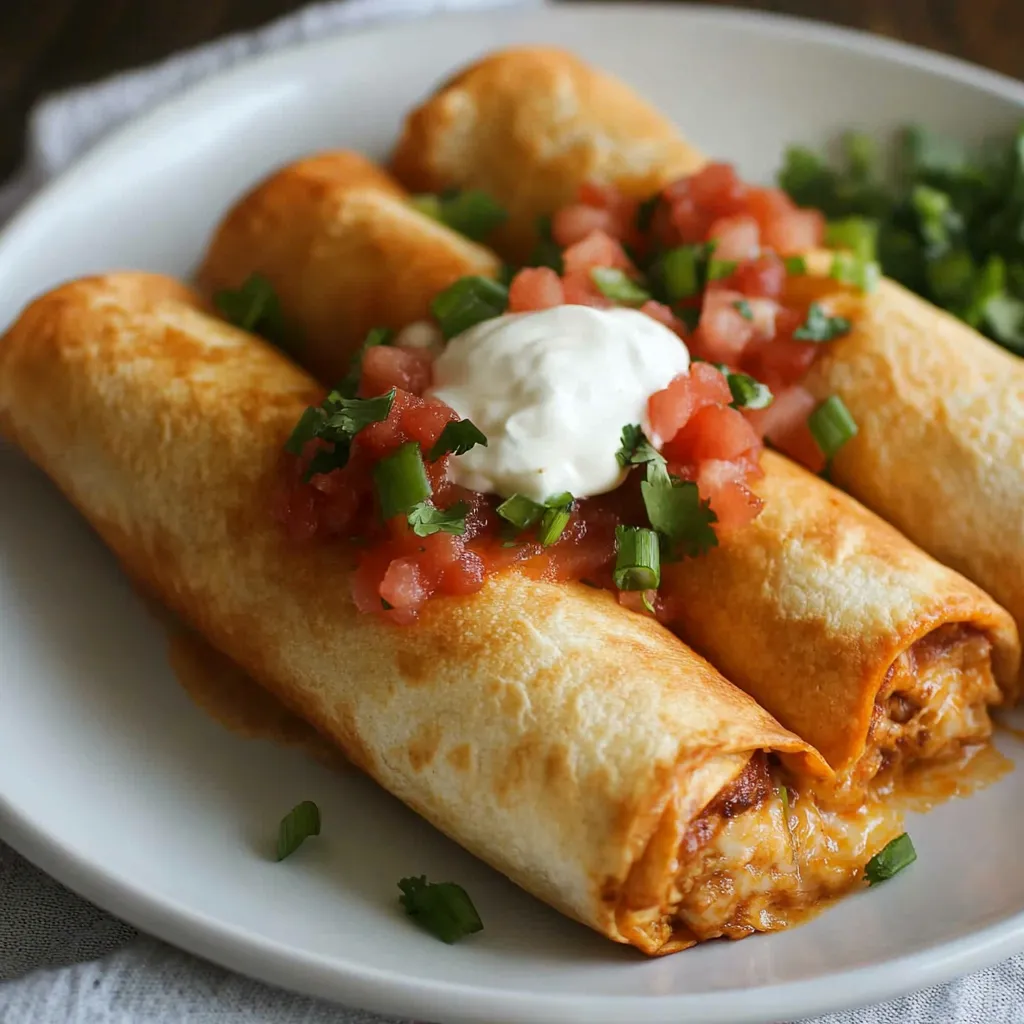 Pin
Pin
Every bite into a perfectly crispy chimichanga tells a story of transformation - how a humble tortilla filled with seasoned chicken becomes something magical through the art of proper preparation. In my kitchen, chimichangas have evolved from a restaurant favorite to a cherished family recipe, one that brings everyone to the table with eager anticipation. The secret lies not just in the ingredients, but in understanding how to achieve that perfect golden crust while keeping the filling moist and flavorful.
Last weekend, I served these chimichangas at a family gathering, and my nephew, who usually sticks to plain chicken fingers, couldn't stop asking for more. The key was letting him help with the assembly, creating ownership and excitement about trying something new.
Essential Ingredients and Selection Tips
- Chicken: I prefer using thigh meat for its natural moisture and flavor, but breast works well too. Cook it low and slow with aromatics, then shred it while still warm for the best texture.
- Tortillas: Choose the freshest, most pliable tortillas you can find. I get mine from a local Mexican market where they're made daily. The difference in quality is remarkable.
- Refried Beans: Look for brands without preservatives, or better yet, make your own. The beans act as a binding agent, helping hold everything together.
- Cheese: A combination of cheeses works best: sharp cheddar for flavor and Monterey Jack for melt. Always grate your own - pre-shredded cheese contains anti-caking agents that affect melting.
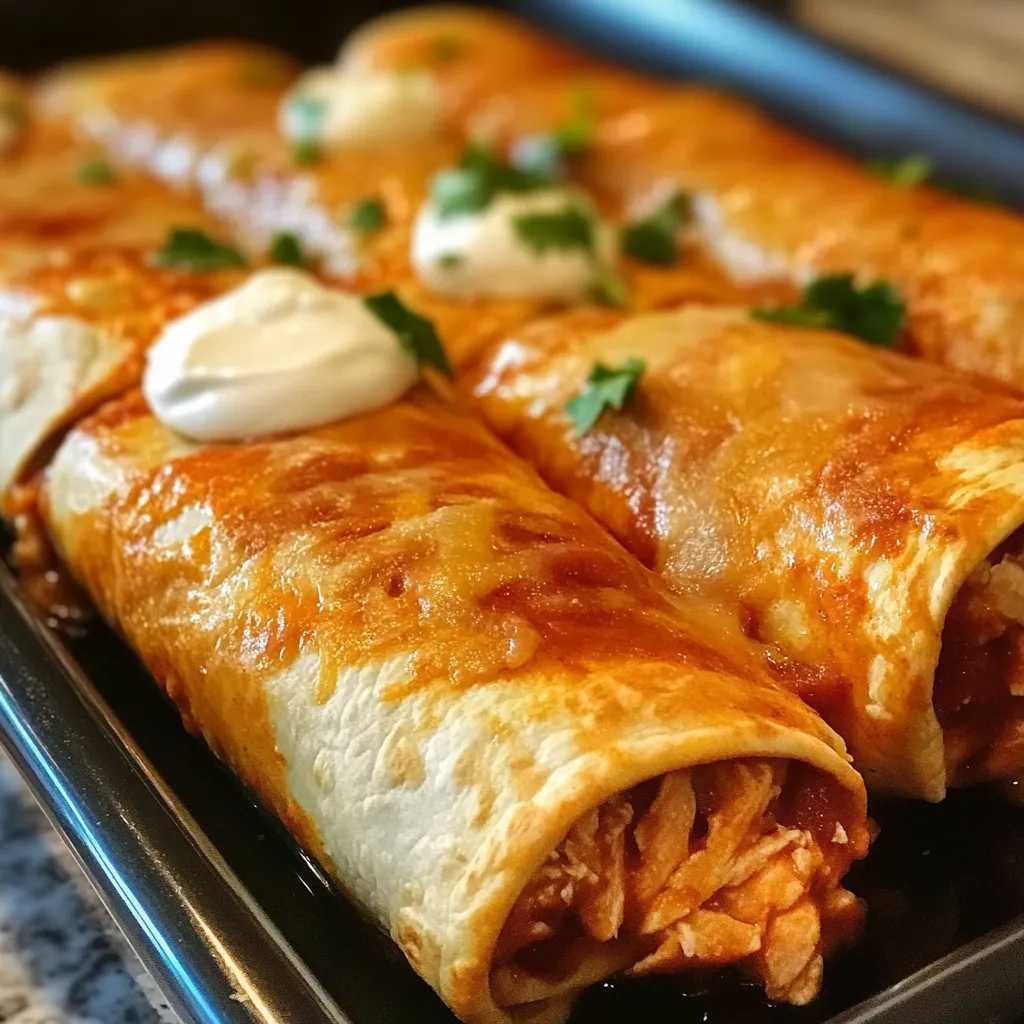
Building the Perfect Filling
Your chimichanga journey begins with properly seasoned chicken. I start by poaching chicken thighs in a flavorful broth with onions, garlic, and Mexican oregano. Once cooled slightly, shred the meat while it's still warm - this allows it to absorb more flavors from your seasonings. Mix it with your beans and cheese while everything's still slightly warm, allowing the flavors to meld together beautifully.
Mastering the Assembly
The art of rolling a perfect chimichanga requires attention to detail. Start by warming your tortillas - I place them on a hot griddle for about 10 seconds per side until they're pliable but not crispy. Keep them wrapped in a clean kitchen towel to maintain flexibility. Place your filling just below the center, being careful not to overfill - this is crucial for achieving that perfect seal.
The Three Cooking Methods
- Traditional Pan-Frying:
- Heat oil in a heavy-bottomed skillet until it shimmers but doesn't smoke. Place your chimichangas seam-side down first - this seals the edge and prevents unrolling. The key is maintaining medium heat to achieve that golden crust without burning. About 2-3 minutes per side usually does the trick.
- Oven-Baked Version:
- For a healthier approach, brush each chimichanga lightly with oil and bake at 400°F. The secret here is preheating your baking sheet - it helps create that crucial bottom crust. Position them seam-side down and bake for 20-25 minutes, rotating halfway through.
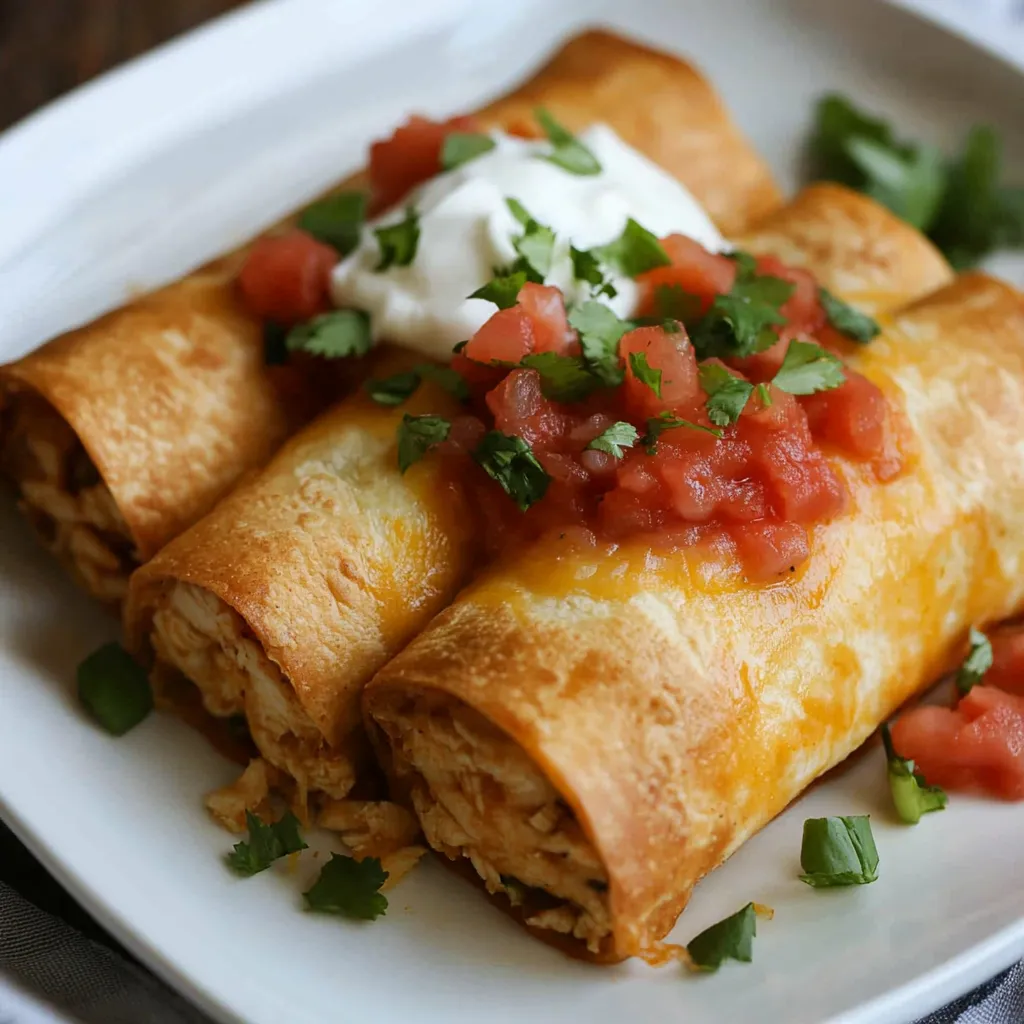
Extended Final Thoughts
Creating the perfect chimichanga is about understanding the balance between crispy exterior and moist, flavorful filling. Through countless iterations in my kitchen, I've discovered that success lies in both technique and timing. The transformation of simple ingredients into this beloved dish never ceases to amaze me, and sharing these techniques brings me joy.
Personal Reflection
My journey with chimichangas began in my grandmother's kitchen, where she taught me that patience and attention to detail make all the difference. What started as a simple attempt to recreate restaurant favorites has evolved into something more meaningful - a way to connect with family and share culture through food.
Cultural and Historical Context
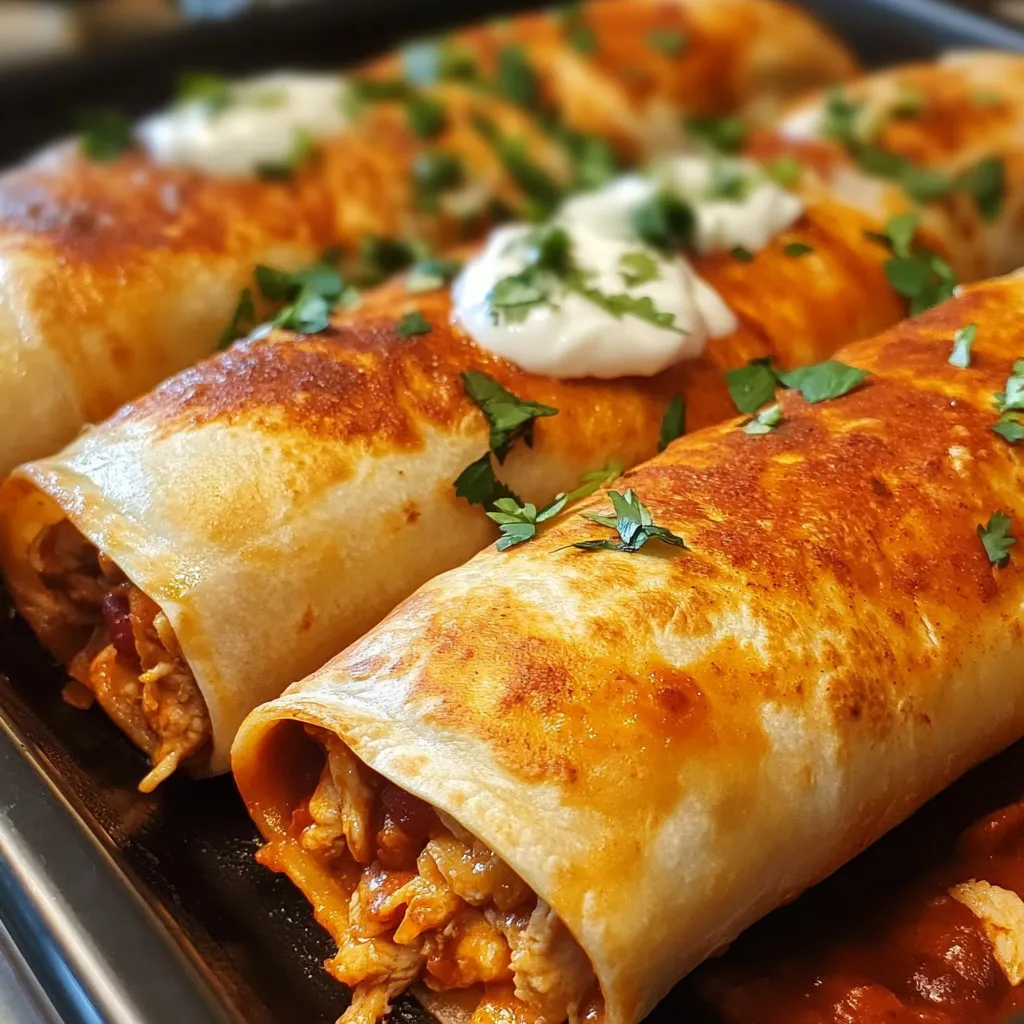
The chimichanga, born from the culinary traditions of the American Southwest and northern Mexico, represents the beautiful evolution of border cuisine. What began as, according to legend, an accidental creation when a burrito was dropped into hot oil, has become a beloved staple of Southwestern cuisine.
This dish embodies the adaptability of Mexican-American cooking, showing how traditional techniques can evolve to create something new and wonderful. While some debate its exact origins, there's no questioning its place in the modern Mexican-American culinary landscape. Every time we prepare these chimichangas, we're participating in this ongoing cultural exchange, adding our own chapter to its rich history.
Final Thoughts
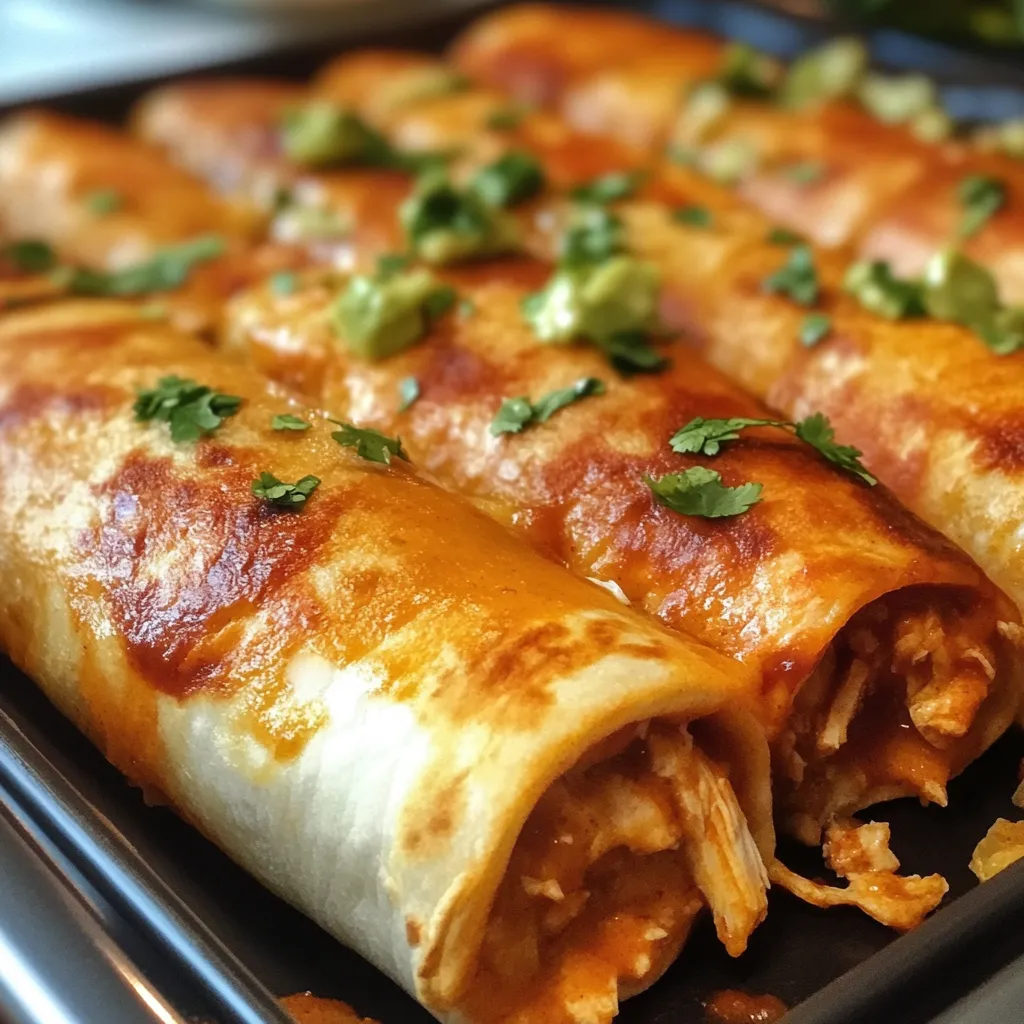
Whether you're making these for a family dinner or a special gathering, remember that each chimichanga carries forward this tradition of turning simple ingredients into something extraordinary through care, technique, and love for good food.
Recipe FAQs
- → What's the difference between baking and frying?
- Baking is healthier and easier, while frying gives a crispier, more traditional texture.
- → Can I make these ahead?
- Yes, assemble and refrigerate up to a day ahead. Cook just before serving for best crispiness.
- → Can I use leftover chicken?
- Yes, leftover or rotisserie chicken works great in this recipe.
- → What's the best way to keep them crispy?
- Serve immediately after cooking and add toppings just before serving.
- → Can these be frozen?
- Yes, freeze before cooking. Thaw and then bake or fry when ready to serve.
